GAS LIGHTING - AN INTRODUCTION TO
THE "HOUSE OF SUGG"
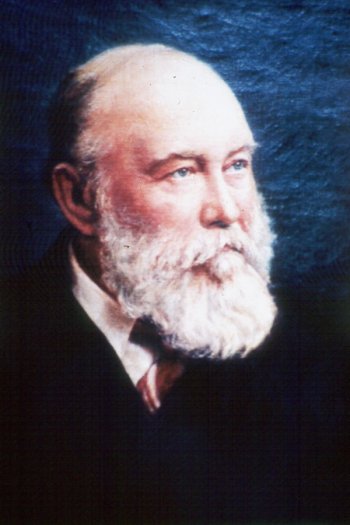 WILLIAM SUGG 1832 -
1907
|
|
The Westminster portcullis with the phrase
“En Avant” was the logo of William Sugg & Co. Ltd
during the Victorian era when it became arguably the
most important manufacturer of gas lighting in the
world. Thomas Sugg, an ironmonger, is credited
with “making and laying” the first gas pipe which was
used for the first demonstration of gas lighting in
the capital in 1807. His son, William, formed
William Sugg & Co. in 1837 and his son, William
Thomas became the driving force after his father’s
death in 1860 right through to 1907.
The underlying principle of all of WT’s
work was technical excellence. The exponential
growth of the gas industry, driven very largely by the
demand for gas street lighting, produced the usual
crop of cheap and nasty fixtures which were doubtless
bought in quantity by unsuspecting customers who knew
nothing about the subject. With the earliest gas
jets being formed from holes drilled in iron pipes,
corrosion could quite quickly increase the size of the
“jet” and thus the amount of gas consumed.
Possibly William’s first really important patent was
for the non corrodible jet made of steatite, a
naturally occurring ceramic which could be turned on a
lathe and then fired to achieve an extreme hardness.
In classic style, the waste powder from this exercise was
compacted into tins and sold as “Pearly Queen” tooth
powder – doubtless sufficiently abrasive to remove
more than just the normal level of dirt!
The demand for ever increasing levels of illumination on the streets could only be achieved by increasing the number of gas jets burning in the lanterns. These open flame lanterns grew and grew to allow for the enormous heat produced by up to 20 jets. |
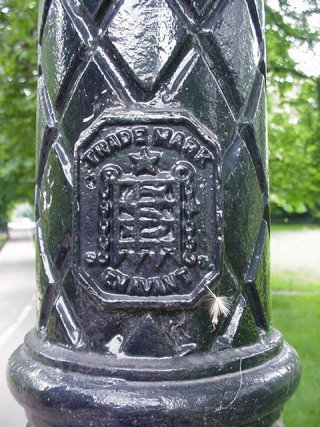 EARLY
LOGO
ON LAMPOST
IN HYDE PARK |
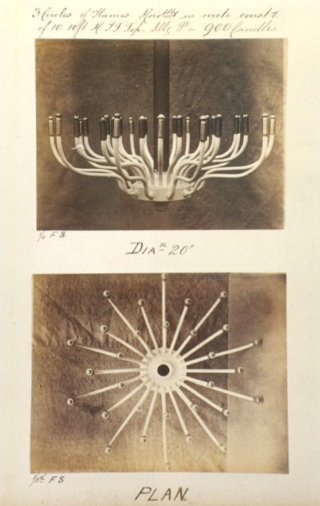 20 Light open burner
|
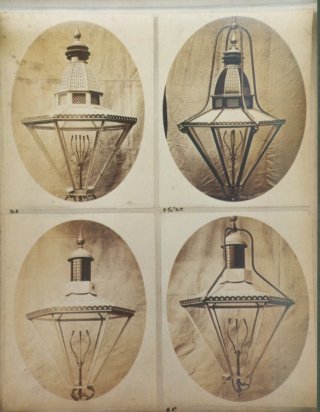 7 feet tall open
flame
lanterns from 1880's
|
The lanterns illustrated above reached 7ft in height and 46” across, requiring substantial and imposing lamp posts to support them.
Meanwhile the electrical industry had been developing. Although the early arc lamps could produce huge amounts of light they were very unreliable and expensive to run. The invention of the gas mantle turned the tables on the electricians, retaining the lead of gas for street lighting for something like another 50 years. They also provided the death knell for the enormous lanterns. This is why they are so rare today.
The well known Windsor lantern introduced by William Sugg in 1898 was the first lantern designed specifically to use the gas mantle. Sugg’s had manufactured no less than 50,000 Windsor lanterns by the time the 1906 catalogue was printed, a staggering number in 8 years and largely by hand.
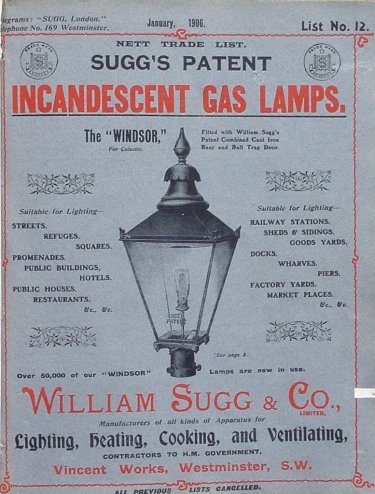 1906 Catalogue showing
Windsor Lantern
|
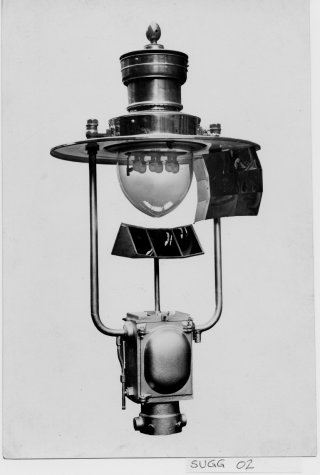 Upright Rochester from the
1930's
|
Although there are many Sugg gas lights that came after William’s death, the Rochester and Littleton shadowless lanterns are by far the most popular and recognizable, particularly because of the huge numbers used by the railways and the surprising number that are still in use today, particularly in places such as Westminster and Covent Garden - still running on gas.
December 2003FOOTNOTE.
This webpage has been written by Chris Sugg the great-great-grandson of William Sugg, the founder of the Company.
For more in-depth webpages about the Company visit their Website at http://www.williamsugghistory.co.uk